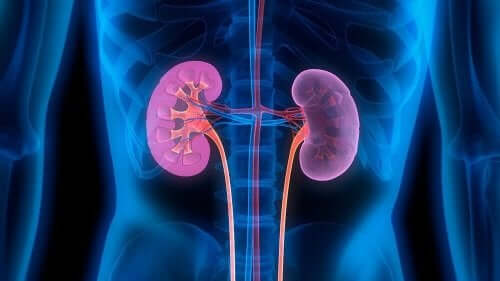Seguril - Uses, Contraindications and Side Effects

Seguril is one of the trademarks under which the pharmaceutical companies market the active substance furosemide. This medication belongs to the family of loop diuretics. Thus, it’s a drug with a highly effective diuretic effect.
This family of drugs can modify the transporting of substances in the nephron, which is the anatomical and physiological unit of the kidneys.
Seguril is a medication that doctors can prescribe on its own or in combination with other drugs for the treatment of high blood pressure. However, it also comes with other indications such as the treatment of edema due to liver or heart disease, for example.
Before learning other characteristics of this medication, you must understand how the kidneys work.
The function of kidneys

The nephron is its anatomical and physiological unit, as we mentioned above. It has 4 parts:
- Proximal convoluted tubule
- Loop of Henle
- Distal convoluted tubule
- Collecting duct system
At the time of synthesizing the urine – its main function – the blood reaches the proximal convoluted tubule through the glomerulus. In this tube, there’s a substance exchange and some are reabsorbed while others secrete like most drugs that are eliminated through our urine.
Then, the blood and the waste liquid continue to pass through the other structures of the nephron. They exchange substances until the urine forms with the waste products and electrolytes that need to be eliminated.
So, the urine finally reaches the ureters and, from here, it passes into the bladder. This organ sends a signal to the brain when it fills up to a certain level – this is the urge to urinate.
The basics of hypertension
Hypertension is a disease characterized by a continuous rise in blood pressure levels. Thus, a person suffers from arterial hypertension when their systolic blood pressure is equal to or greater than 140 mm Hg. In addition, the diastolic blood pressure must also be above 90 mm Hg.
However, many people don’t understand the concept of blood pressure well and it’s important to explain it. Generally, the heart puts pressure on the arteries so that they direct blood in the direction of the different organs of the body. The highest blood pressure values correspond to the contractions of the heart. On the contrary, the lowest blood pressure happens when this organ relaxes.
Currently, arterial hypertension is one of the main risk factors for the development of cardiovascular diseases. In fact, they’re the leading cause of death in developed countries. Some of them are:
- Ischemic heart diseases
- Heart failure
- Kidney and brain diseases
You may also be interested in reading: Improve Kidney Function with These Foods
How does Seguril exert its effect on the organism?

Seguril exerts its effect on the handle of Henle, altering the transport of substances. When this exchange alters, the volume of urine increases as the excretion of water and electrolytes is stimulated. All this leads to a decrease in the volume of extracellular fluids.
To achieve this result, furosemide can inhibit a structure that acts as a transporter of sodium, potassium, chloride and, to a lesser extent, calcium and magnesium. This way, it prevents such electrolytes from reabsorbing and it leads to more water release.
The effects of furosemide are fast and short-lived. It removes water, thus reducing its volume in the body and, due to this phenomenon, it also impacts the treatment of hypertension.
Side effects of Seguril
Treatment with Seguril is not free from side effects, as is the case with all commercial medications. The most frequent adverse reactions pertain to its diuretic effects. Among these reactions we can mention:
- Hypokalemia: When the doses are high, potassium levels in the blood can greatly reduce and arrhythmias can be triggered.
- Ear problems
- Hyponatremia: Low sodium levels
- Hyperglycemia: Glucose levels elevate
Also read: Natural Remedies for Kidney Failure
Conclusion
Finally, Seguril is the trademark of furosemide, a medication for diuretic purposes and mainly for the treatment of hypertension. So, consult your doctor or pharmacist for any questions you might have about Seguril in order to avoid complications. In addition, you should also inform them if you’re taking any other medication as it could alter its effects.
All cited sources were thoroughly reviewed by our team to ensure their quality, reliability, currency, and validity. The bibliography of this article was considered reliable and of academic or scientific accuracy.
- Vademecum. (1964). SEGURIL.
- Valdivieso D., A. (2018). Diurético del Asa Furosemida y Acido Etacrinico. ARS MEDICA Revista de Ciencias Médicas. https://doi.org/10.11565/arsmed.v0i1.1294
- Martínez-Rodríguez, R. H., García Lorenzo, J., Bellido Peti, J., Palou Redorta, J., Gómez Ruiz, J. J., & Villavicencio Mavrich, H. (2007). Diuréticos del asa y ototoxicidad. Actas Urologicas Espanolas.
This text is provided for informational purposes only and does not replace consultation with a professional. If in doubt, consult your specialist.








